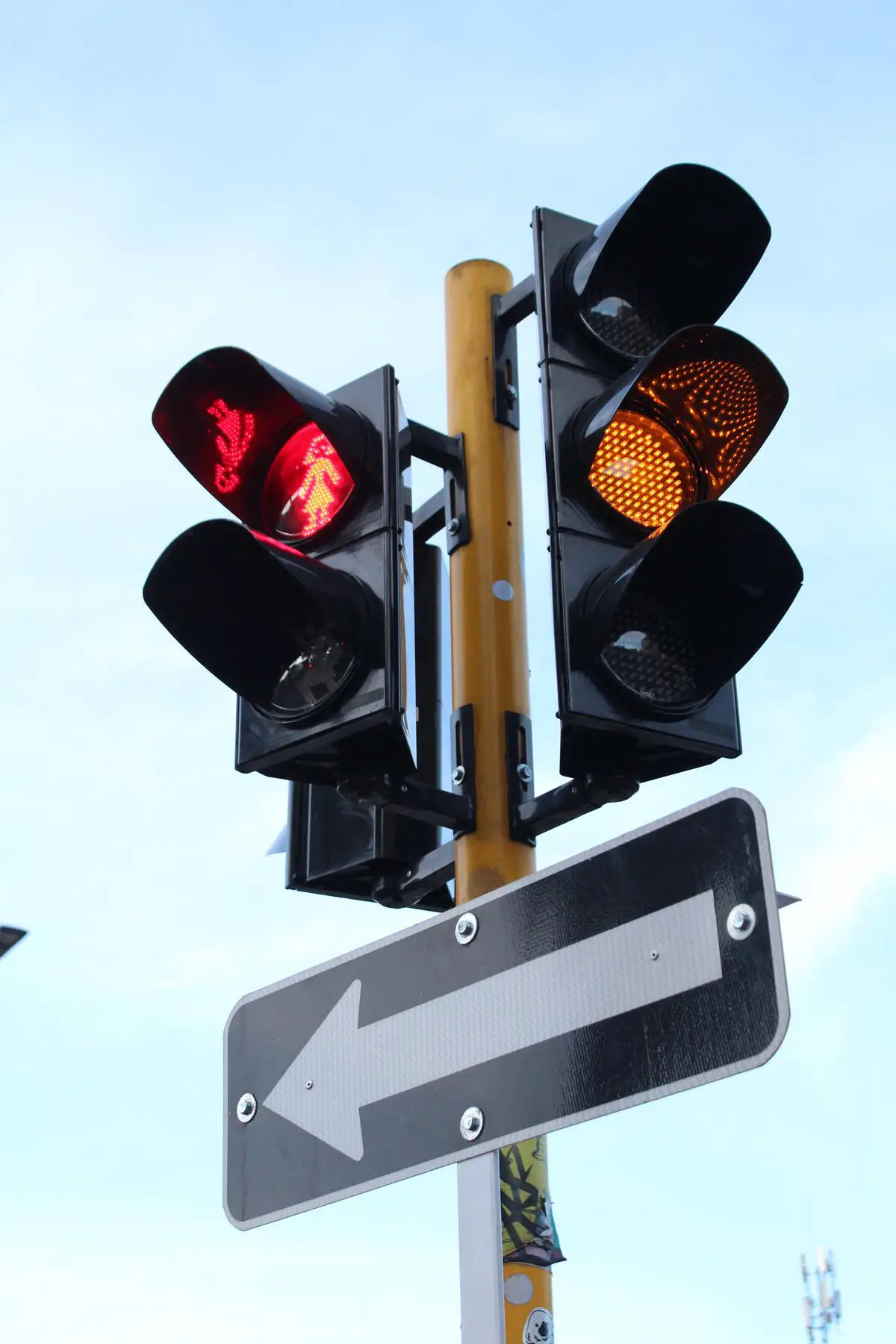Traffic signal delays have become an increasingly frustrating aspect of daily commutes for millions of Americans, resulting in wasted time, increased stress, and significant economic consequences. Understanding the causes of these delays, their broader implications, and potential solutions is not only crucial for policymakers and urban planners, but also vital for individuals looking to navigate congested roadways with greater ease and efficiency. This comprehensive examination of traffic signal delays provides valuable insights into their underlying causes, the impact on commuters and the economy, technological innovations in traffic management, policy and infrastructure solutions, as well as personal strategies and tips for avoiding delays.
Causes of Traffic Signal Delays
Causes of Traffic Signal Delays
Traffic signal delays are a common issue faced by commuters that can lead to being late for work, school, or other important events. These delays are caused by various factors, such as signal timing issues, malfunctioning equipment, and traffic congestion. Additionally, weather, construction, and human error can contribute to the problem.
Signal Timing Issues
Traffic signals work on a predetermined timing system that dictates the duration of the green, yellow, and red lights. If there is an issue with the traffic signal controller or the signal timing plan, it may cause delays as vehicles wait unnecessarily at intersections. Signal timing issues can also arise from problems with traffic sensors and poorly designed traffic signal sequences, leading to inefficient movement of vehicles across intersections. Traffic engineering professionals need to periodically assess and update signal timings to ensure optimal traffic flow.
Malfunctioning Equipment
As with any electrical or electronic system, traffic signals can experience malfunctions due to aging and wear, electrical issues, or damage from accidents or vandalism. Malfunctioning equipment could cause traffic signals to be out of sync, stuck or flashing, further leading to inefficient traffic operations and delays. Local traffic management agencies are responsible for regular inspection, maintenance, and repair of traffic signal equipment to minimize such issues.
Traffic Congestion
High volumes of traffic on roadways can overwhelm the capacity of signals and intersections, causing significant delays at traffic signals. When more vehicles are waiting to pass through an intersection than can be accommodated in one signal cycle, the queues extend, and delays increase progressively. Demand-based adaptive traffic signal systems that adjust the signal timings according to real-time traffic conditions can help alleviate this problem to some extent.
Weather Conditions
Weather conditions, such as fog, rain, snow, and ice, can impact both traffic signal equipment and driver behavior. Poor visibility in extreme weather conditions may lead to drivers missing signal changes and driving more cautiously, causing delays. Additionally, traffic signal cameras and sensors may have difficulty detecting vehicles in inclement weather, leading to further delays due to improper signal timings.
Construction and Roadwork
Construction and roadwork projects can significantly impact traffic signal operations. Temporary changes to lane configurations or intersection geometry, coupled with the presence of construction equipment and workers, can lead to confusion and delays at signalized intersections. Traffic management plans developed during construction projects should address the potential impact on signal operations to minimize delays.
Human Error
Finally, human error plays a significant role in traffic signal delays. Drivers who do not pay attention to the roadway environment or disregard traffic signals may cause delays by stopping abruptly, blocking intersections, or being involved in accidents. Education and enforcement efforts can help address issues arising from human error in driving behavior.
Conclusion
In conclusion, traffic signal delays are a result of various factors, including signal timing issues, malfunctioning equipment, and traffic congestion. Weather, construction, and human error also add complexity to the challenge of ensuring efficient traffic signal operations. Addressing these issues involves a combination of regular maintenance, adaptive traffic management systems, well-thought-out construction planning, and traffic safety education and enforcement. To further understand the impact of these delays, it’s essential to consider how they affect individual commuters and their daily lives.

Impact on Commuters and Economy
Impact on Individual Commuters
Traffic signal delays can have significant consequences for individual commuters. One of the main impacts is an increase in travel time, which can lead to individuals arriving late to work or other important appointments. This, in turn, can create stress and frustration for the affected individuals, as they may struggle to meet deadlines, keep up with their workload, or maintain a work-life balance.
In addition to the loss of time, traffic signal delays can also lead to increased fuel consumption for vehicles. When cars are forced to idle at traffic signals for extended periods, they continue to burn fuel without making any progress toward their destination. Over time, this increased fuel consumption can add up, leading to higher fuel expenses for individual commuters.
Furthermore, the wear-and-tear on vehicles can also be exacerbated by traffic signal delays. Constantly stopping and starting at traffic signals can wear out a vehicle’s brakes more quickly, and the additional time spent idling can lead to increased engine wear. These factors can result in higher maintenance costs for individual commuters, making their overall transportation experience more expensive. As such, it is crucial to continue working toward reducing traffic signal delays and improving efficiency in managing traffic flow.
Impact on Productivity and Businesses
The consequences of traffic signal delays extend beyond individual commuters to impact the productivity of businesses and, ultimately, the economy as a whole. When employees are consistently late due to traffic signal delays, businesses can experience a decrease in productivity, as missed meetings, disrupted schedules, and decreased morale can all contribute to a less efficient work environment.
Additionally, traffic signal delays can contribute to the overall problem of traffic congestion in cities, which has been shown to have a negative effect on economic growth. For example, a study conducted by the Centre for Economics and Business Research (CEBR) found that traffic congestion cost the U.S. economy over $124 billion in 2013, with that figure projected to rise to $186 billion by 2030.
Furthermore, businesses that rely on transportation to move goods and services can suffer from the inefficiencies created by traffic signal delays. Delivery companies, for example, may struggle to meet deadlines or maintain timely service due to the additional time spent waiting at traffic signals. This can lead to increased costs for these businesses, as they may have to invest in additional resources (such as hiring more drivers or purchasing more vehicles) in order to compensate for the delays.
Impact on Local Government and Infrastructure
Local governments face the challenge of managing traffic signal delays and their consequences. They are responsible for ensuring smooth traffic flow within their jurisdictions and addressing congestion when it occurs. As a result, they may need to invest in additional infrastructure or traffic management strategies, such as updating traffic signal systems or implementing traffic management centers, to mitigate the impact of traffic signal delays.
Furthermore, these signal delays can lead to infrastructure degradation, as increased traffic volumes put a strain on road surfaces and other transportation assets. This may necessitate extra investments in infrastructure maintenance and repair, adding to the financial burdens of local governments.
Overall, traffic signal delays have wide-ranging consequences for individual commuters, businesses, and local governments alike. These delays can result in increased costs, decreased productivity, and strained public resources. However, understanding these impacts enables stakeholders to work together to develop effective strategies and solutions, such as Adaptive Signal Control Technology, to minimize the negative effects of traffic signal delays on both individuals and the larger economy.

Technological Innovations in Traffic Management
Adaptive Signal Control Technology
One such solution is the implementation of Adaptive Signal Control Technology (ASCT), an innovative traffic management system that continuously adjusts signal timings based on real-time traffic conditions. ASCT aims to minimize delays, reduce congestion, and improve overall traffic flow, ultimately benefiting both individuals and local governments.
ASCT enables traffic signals to use sensors and algorithms to detect the presence of vehicles at intersections and adjust green light timings accordingly. The system considers factors such as traffic volume, vehicle types, and desired speed of travel to optimize signal timing and ensure smoother transitions between intersections. By implementing ASCT, local governments can actively address issues caused by traffic signal delays and work towards creating a more efficient and sustainable transportation infrastructure.
Traffic Sensor Technology
Traffic sensors play a crucial role in new traffic management technologies like ASCT by providing essential data regarding traffic volume, speed, and vehicle types. There are various types of traffic sensors being used, including induction loops, radar sensors, video detection, and infrared sensors. These sensors are installed either on or beneath the roadway, or as overhead devices.
The collected data is then sent to a central traffic management center that uses advanced algorithms to process the information and adjust signal timings to optimize traffic flow and reduce delays.
Connected Vehicle Infrastructure
Connected vehicle infrastructure refers to the integration of vehicle-to-vehicle (V2V) and vehicle-to-infrastructure (V2I) communication systems. With this technology, vehicles can “talk” to each other and share information on speed, location, and traffic conditions. Simultaneously, vehicles can also communicate with traffic lights and other infrastructure elements to optimize traffic flow and reduce congestion.
By receiving real-time information on traffic conditions, drivers can make more informed decisions on route choices and anticipate potential delays before they occur.
Data-Driven Decision Making
Advancements in data analytics and traffic modeling have enabled transportation officials to make more informed decisions regarding traffic management. Data from traffic signals, sensors, and connected vehicles can now be analyzed to identify trends and patterns in traffic behavior.
This information can then be used to inform long-term traffic planning, signal timing optimization, and infrastructure improvements. By incorporating data-driven decision making into traffic management processes, transportation officials can develop strategies that reduce delays, improve efficiency, and enhance the overall transportation experience for road users.
Improving Traffic Signal Efficiency
As technological innovations continue to advance, traffic management systems have the potential to reduce delays and improve traffic signal efficiency. Implementation of adaptive signal control technology, traffic sensor technology, and connected vehicle infrastructure can all contribute to the creation of a smarter and more efficient transportation system.
By capitalizing on these innovative technologies and incorporating data-driven decision making into traffic management practices, we can work towards a more connected and efficient future for our roadways.

Policy & Infrastructure Solutions
Exploring Congestion Pricing as a Traffic Management Strategy
Another approach to reducing traffic signal delays and congestion is the implementation of congestion pricing. This form of traffic management charges drivers a fee for using specific roads during peak traffic times. The goal of congestion pricing is to decrease the number of vehicles on the road, reducing traffic congestion and improving the efficiency of traffic signals. Cities such as London have successfully implemented congestion pricing, resulting in a significant decrease in traffic congestion.
Improving Public Transportation Systems
Improving public transportation systems can also play a significant role in reducing traffic signal delays. By providing efficient, affordable, and reliable public transit options, more people may choose to utilize public transportation instead of driving. This would result in fewer cars on the road and consequently, shorter waiting times at traffic signals. Investments in public transportation, such as expanding bus routes, increasing subway service frequency, and improving commuter rail lines, can all contribute to reducing traffic signal delays.
Promoting Alternative Transportation Options
Promoting alternative transportation options, like cycling and walking, can help alleviate traffic signal delays as well. Cities can invest in infrastructure such as bike lanes, bicycle-sharing programs, and pedestrian-friendly streetscapes to encourage people to choose these modes of transportation over driving. Additionally, offering incentives for commuters who choose to walk or bike to work, such as discounted gym memberships or rewards programs, can further encourage the use of alternative transportation options and reduce the number of cars on the road.
Urban Planning and Traffic Engineering
Urban planning and traffic engineering play a crucial role in addressing traffic signal delays. Well-planned urban layouts with an emphasis on mixed-use development and transit-oriented design can reduce dependency on cars and thus, decrease traffic congestion. Traffic engineers can also develop signal timing plans that adapt to real-time traffic conditions to optimize traffic flow. Technologies such as adaptive traffic signal control systems use sensors to collect data on traffic volume and adjust signal timings accordingly, which can reduce traffic signal delays.
Smart Growth Policies
Implementing smart growth policies can contribute to alleviating traffic signal delays. Smart growth is an urban planning and transportation concept that aims to concentrate development in compact, walkable urban centers to avoid sprawl. By focusing on the creation of dense, mixed-use neighborhoods, smart growth policies encourage more people to walk, bike, or take public transit instead of driving. This reduces the number of vehicles on the road and subsequently, minimizes traffic signal delays.
Introduction
Delays due to traffic signals pose a significant challenge for urban commuters and contribute to increased travel times and congestion. To address this problem and create more sustainable, efficient urban environments, various policy and infrastructure solutions must be considered. These include implementing congestion pricing, investing in public transportation systems, promoting alternative transportation options, and incorporating urban planning and traffic engineering concepts that maximize traffic flow efficiency.

Photo by crasktellanos on Unsplash
Personal Strategies and Tips for Avoiding Delays
Real-Time Traffic Updates for the Public
As a member of the general public, one of the most effective ways to stay informed about traffic signal delays and navigate your daily commute is to utilize real-time traffic updates available through mobile apps, such as Google Maps or Waze. These platforms use real-time data to keep you informed about the current traffic conditions, including any delays caused by traffic signals, accidents, or other incidents. With this information at your fingertips, you can make informed decisions about your route and estimated arrival time. Consequently, these technologies enable individuals to do their part in reducing overall delays and contribute to creating more efficient urban environments.
Choose Alternative Routes
Navigating your daily commute often requires you to choose between a few potential routes. If you frequently experience delays due to traffic signals, it might be time to scout out some alternative routes that allow you to bypass problem areas. Spend some time exploring your neighborhood and surrounding streets to identify alternative routes that could help you avoid traffic signals and other common sources of slowdowns. Test these pathways during different times of day to determine their effectiveness in minimizing delays.
Adjust Travel Times
Another way to avoid traffic signal delays and other congestion-related issues is to shift your travel times. If you typically leave for work or other appointments during peak traffic periods, consider altering your departure time to avoid these busy hours. For example, you could leave for work earlier to beat the morning rush or hold off for an extra hour to miss the evening rush. By adjusting your travel times, you minimize the chances of encountering traffic signal delays and other road-related hold-ups that can contribute to late arrivals.
Take Advantage of Public Transportation
In some instances, you may be able to avoid the headache of traffic signal delays altogether by opting for public transportation instead of driving. Many cities offer extensive public transportation networks, including buses, subway systems, and light rail lines, that can help you bypass road congestion. When planning your daily commute, take some time to research public transportation options in your area and determine if these alternatives could save you time and minimize delays due to traffic signals.
Implement Telecommuting or Flexible Work Schedules
Lastly, one of the most effective ways to avoid traffic signal delays and other road-related frustrations is simply to minimize your time on the road. Many employers today recognize the value of telecommuting and flexible work arrangements, allowing employees to work from home at least part-time, or adjust their hours to avoid peak traffic periods. If your employer is open to these options, discuss the possibility of adjusting your work schedule to minimize your exposure to traffic signal delays and other sources of road-related stress.
Conclusion
When it comes to avoiding traffic signal delays, it’s essential to stay informed, be adaptable, and explore alternative solutions. By implementing these strategies, such as using real-time traffic updates, seeking out alternative routes, adjusting your travel times, embracing public transportation, or implementing telecommuting arrangements, you can minimize the impact of traffic signal delays and ensure a more efficient and stress-free daily commute.

As our cities continue to grow and evolve, addressing traffic signal delays will remain a critical challenge for all stakeholders involved. By exploring a wide range of factors that contribute to these delays, as well as potential solutions and strategies to minimize their impact, we can help create a more efficient, sustainable, and accessible transportation system for everyone. Ultimately, a well-rounded understanding of traffic signal delays will empower individuals to make informed decisions and adapt their behaviors in ways that contribute to the overall effectiveness of our roadways. Better traffic signal management, combined with individual efforts, can lead to smoother, less stressful commutes and a healthier, more productive society.

Recent Comments